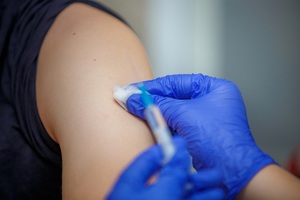Live Classes

India has taken up the fight against cervical cancer in earnest with the Central government announcing that it will roll out vaccination for girls aged between 9 and 14 years through schools. The decision comes at a critical juncture with a study in The Lancet published this month showing that India accounts for the highest number of cervical cancer cases in Asia, followed by China.
World Statistics
More than 58% of all cases of cervical cancer and deaths globally were estimated in Asia with India accounting for 21% of cases and 23% of deaths, followed by China (18% and 17%).
Cervical cancer is a preventable and treatable cancer. It is caused by infection with the human papillomavirus (HPV) and there are vaccines which protect against carcinogenic HPV. With more than 6,00,000 women diagnosed with cervical cancer worldwide in 2020, the World Health Organization laid down several guidelines that countries need to follow to eliminate it as a public health problem.
According to the International Agency for Research on Cancer, the WHO has specified that countries must reach and maintain an incidence rate of fewer than 4 new cases of cervical cancer per 1,00,000 women a year. To achieve that goal, it is necessary that 90% of girls will have to be fully vaccinated with the HPV vaccine by the age of 15.
HPV Vaccine Included in UIP
To that end, the government’s intent to introduce the HPV vaccine in the Universal Immunisation Programme (UIP) is a welcome move. India’s immunisation network, as was evident during COVID-19, has worked well, and diseases such as polio and maternal and neonatal tetanus have been eliminated.
The UIP is one of the largest public health programmes targeting over 2 crore newborns and 2 crore pregnant women annually, and offers free vaccines for at least 12 diseases.
Indigenous vaccine 'Sarvavac'
To battle cervical cancer, India is expected to roll out the indigenously developed Cervavac vaccine by mid-2023. It has received the Drugs Controller General of India’s approval and has been cleared by the National Technical Advisory Group for Immunisation for use in the UIP programme. The vaccination will be provided primarily through schools, but importantly the government has clarified that girls who do not go to school will be reached through community outreach and mobile teams.
Now what next?
This is a vital step because studies show that there is a link between cervical cancer incidence and human development index values, with progressively lower rates observed as HDI rises. Together with vaccination, screening programmes must be conducted to detect early signs of the disease to allow time for treatment.
About immunization
Immunization is the process whereby a person is made immune or resistant to an infectious disease, typically by the administration of a vaccine. Vaccines are substances that stimulate the body’s own immune system to protect the person against subsequent infection or disease.
Universal Immunisation Programme
Mission Indradhanush
Intensified Mission Indradhanush (IMI)
To further intensify the immunization programme, Prime Minister Shri Narendra Modi launched the Intensified Mission Indradhanush (IMI) on October 8, 2017. Through this programme, Government of India aims to reach each and every child up to two years of age and all those pregnant women who have been left uncovered under the routine immunisation programme/UIP. The focus of special drive was to improve immunisation coverage in select districts and cities to ensure full immunisation to more than 90% by December 2018.
Intensified Mission Indradhanush (IMI) 2.0
Download pdf to Read More